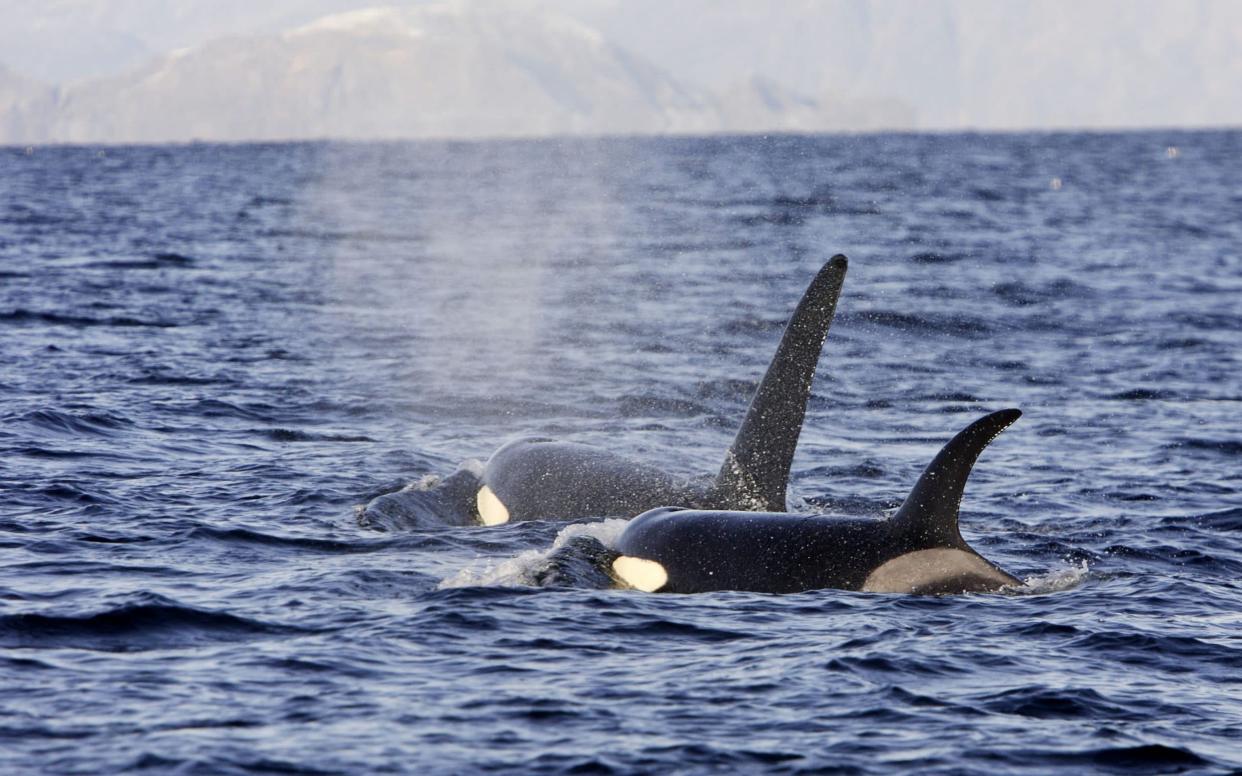Toxic flame retardants discovered in blubber of killer whales

Killer whales have been found to have flame retardant chemicals in their blubber which can be passed on to their young.
The compounds, called brominated flame retardants (BFRs), were found along with high levels of man-made chemicals called perfluoroalkyl substances (PFAS).
The compounds, many of which were made to replace now-illegal substances, accumulate in the food chain and have been linked to infertility and hormone problems in wildlife.
Meanwhile, polychlorinated biphenyls (PCBs), which have long been banned, were detected in the blubber of seven out of eight killer whales examined. The levels of the substances in their bodies exceeded thresholds for harm, the researchers said.
It is believed the chemicals made it into the whales through other animals which they ate.
Researchers say their discovery suggests the chemicals are not broken down in the environment and eventually reach harmful concentrations in some species.
Clare Andvik, a research assistant at the University of Oslo and member of the research team behind the study, said: "The presence of these emerging contaminants in top predators in environments without clear local sources, such as the Arctic, is evidence that the chemicals can travel long distances and have persistent and biomagnifying properties.
"Tissue samples were collected from seven individual killer whales washed ashore and one individual by-caught in a fishing net in the period 2015 to 2017 in northern Norway."
She added: "The presence of unregulated emerging contaminants in their tissues, in addition to the legacy compounds, gives cause for concern.
"Levels of pollutants in top predators give an indication not only of ecosystem health but also of the persistence of chemicals, passive mobility in the environment, and active biotransport with migrating animals."
The team carried out autopsies on the whales, including one calf, to determine the chemical contents of their bodily tissues. They found that most of the chemicals were deposited in their fat, but they were also detected in milk found in the calf's stomach - which is rich in fats.
Ms Andvik added: "The present study is the first to document the maternal transfer of emerging BFRs in marine mammals and to quantify levels of PFAS in Norwegian killer whales.
"Our results are relevant for continued biomonitoring of the Arctic marine ecosystem and provide further evidence of the persistent and bioaccumulative properties of emerging contaminants."
The findings have been published in the journal Environmental Toxicology and Chemistry.

